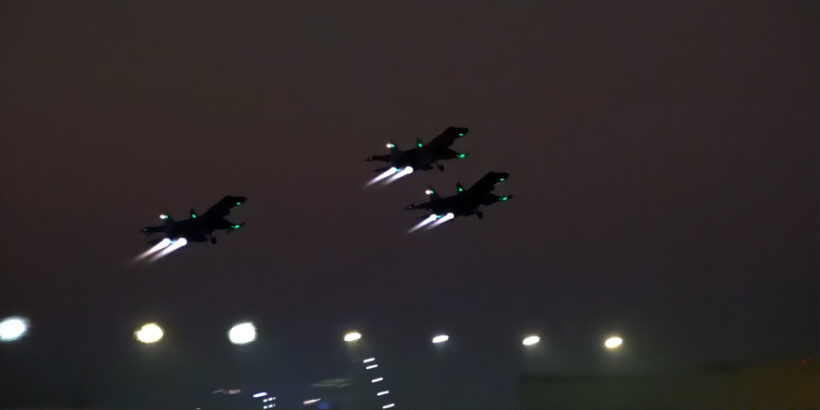Russian President Vladimir Putin visited the United Arab Emirates and Saudi Arabia on 6 December 2023. All along the route of the Il-96-300 presidential aircraft to Abu Dhabi, the airliner was accompanied by an escort of four Su-35S fighter jets with standard armament of various classes. The defence ministry specified that all fighters carried four short- and medium-range air-to-air missiles (R-73 and R-77) each.
The action turned out to be impressive. Firstly, because usually the escort of warplanes during the meeting of a high-ranking guest is provided by the receiving party. Here it was necessary to obtain consent for overflight of armed aircraft from several countries at once: Azerbaijan, Iran and the Arab Emirates themselves. The overflight consent shows the highest level of trust these countries have in Russia.
Second, and no less impressive, is the Su-35’s ability to perform a long non-stop flight. The Ministry of Defence does not specify the VKS base from where the Su-35 took off to escort Flight 1, but, for example, it is more than 2,700 kilometres from the Chkalov State Flight Test Centre in Akhtubinsk to Abu Dhabi. The range of the Su-35S with maximum refuelling without suspended fuel tanks is 3,500 kilometres. The F-22 with two fuel tanks has a range of 2,960 kilometres and a range of 3,220 kilometres. That is, after arriving in Abu Dhabi, the escort aircraft had fuel reserves for at least another 500-700 kilometres of flight.
“This demonstrated Russia’s strength. The Su-35 has a significantly longer range than any other class of Western fighters, more than twice the range of the F-22 and F-35,” Military Watch Magazine noted in its publication. It recalled that Russian planes have shown themselves at their best in the special operation to defend Donbass, having accumulated “impressive combat experience”. According to journalists, this class of fighters has probably shot down more foreign fighters in combat than any other type of fighter aircraft of the 21st century.
The record range was achieved thanks to the placement of fuel tanks in the fuselage and wing consoles of the Su-35. Sponge-shaped polyurethane foam is used to prevent paraffin from moving inside the tanks during flight under the influence of overloads. The aircraft is equipped with the AL-41F-1S engine developed by the Lyulka Design Bureau and ODK-UMPO. The powerplant allows the Su-35S to develop supersonic speed without using afterburner mode.
But the main task of the escort is to protect the President and Air Force One in case of danger. In the event of an attack, the presidential Il-96 itself suppresses and diverts the attacking missiles with an electronic warfare system and heat traps. The Su-35s will do the same. The Su-35S platoon must intercept the enemy’s missiles, drones or fighters and destroy them. The Su-35S will also have the task of preventing attempts by enemy aircraft to force the Il-96 to land or aggressively influence it by other means.
In the evening of the same day, during Vladimir Putin’s flight from Abu Dhabi to Riyadh, Su-35 pilots demonstrated their skills by taking off in the dark in a tight formation of three aircraft.
Escorting a presidential flight by fighter jets is a rare phenomenon. For example, in 2017, Su-30SM aircraft flew alongside Putin’s Tu-214 jetliner as he travelled to Cairo after a visit to Syria. In 2021, Swiss fighter jets were next to an Il-96 while travelling to Geneva to meet US President Joe Biden. Bern explained this as a sign of respect at the time.



